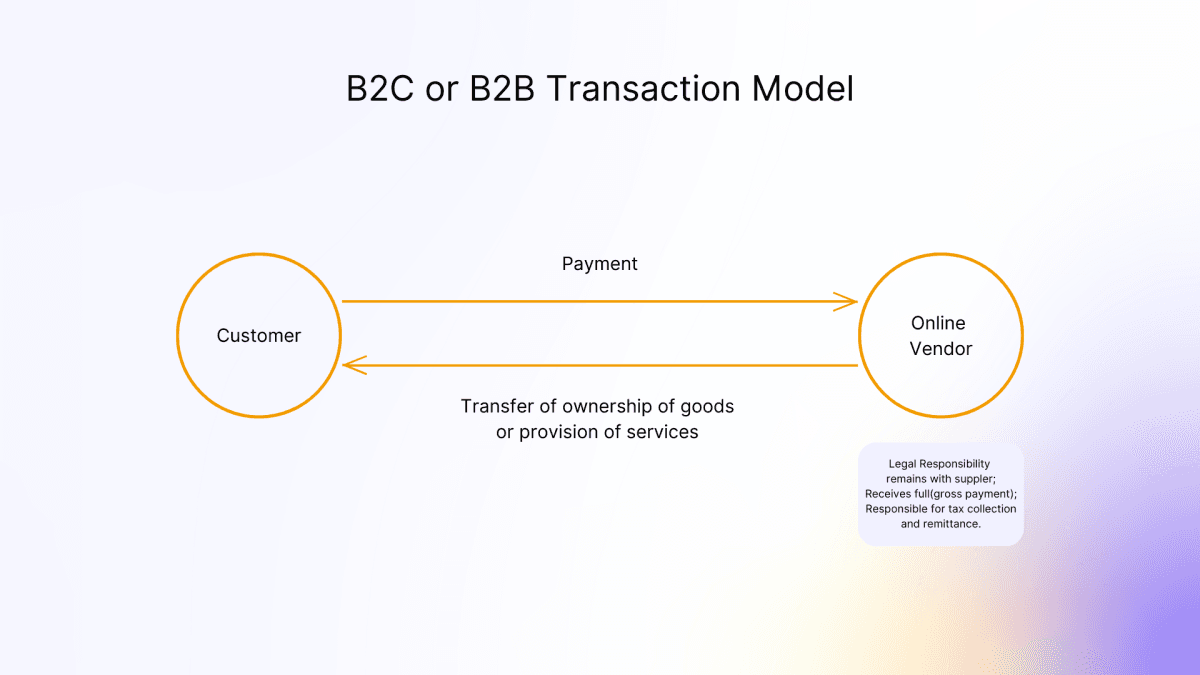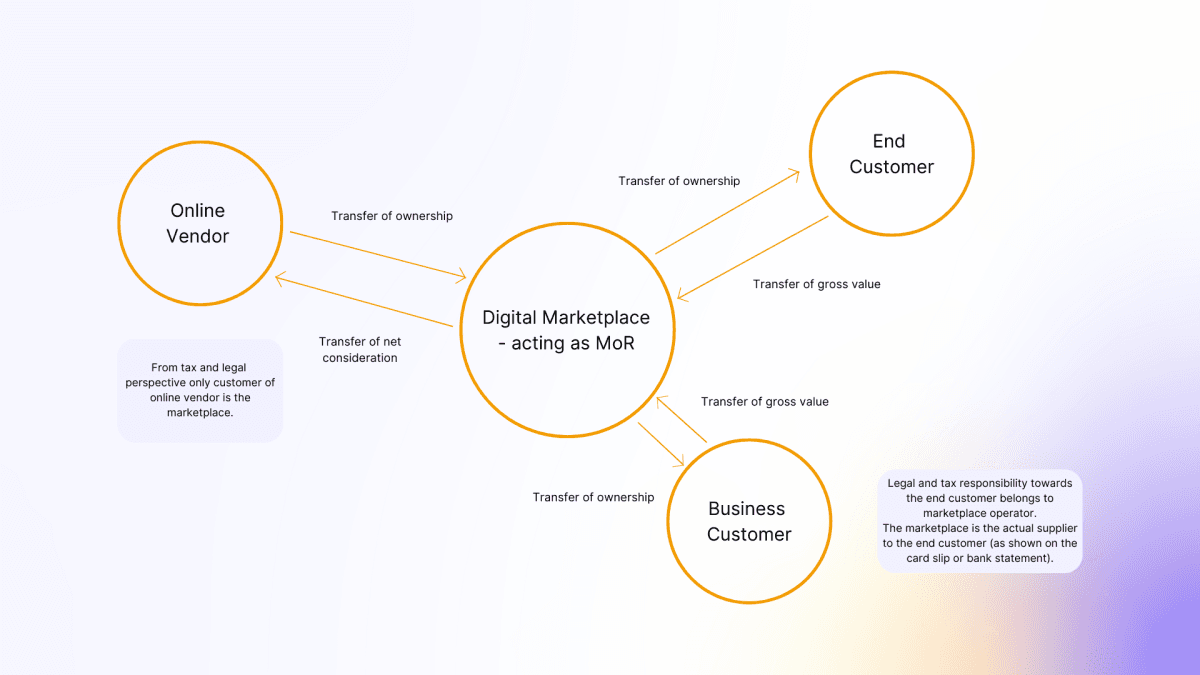The birth of the e-commerce business landscape has paved the way for the introduction of many novelties regarding the types of economic operators that are part of it. The legal-business term Merchant of Record (MoR) isn’t entirely new. It has been used in the business world for many years since the inception of electronic commerce.
In electronic commerce, its status and implicit meaning became more connected to the terms digital marketplaces, online vendors, payment service providers, triangular transaction chains, and other interconnected terms.
We will not spend much time discussing in detail the implications of the concept of Merchant of Record in digital marketplaces (we will leave that for a different occasion). We will skip more than a few steps and move directly to the concise but practical, self-explanatory definition of the MoR shown in the accompanying schemes.
Before that, let’s briefly explain the MoR concept within the online commerce ecosystem.
Within the digital economy framework, a merchant of record (MoR) represents a legal entity(platform operator)that assumes the role of seller of goods or services to an end customer. From a legal point of view, the MoR is the supplier of goods or services to an end customer.
Behind the curtain, two transactions are happening. There is a B2B transaction between an online vendor and a platform(transfer of ownership from vendor to platform) and a successive transaction between the platform operator and the end customer. From the legal and tax point of view, the operator is a supplier.
In practical examples, let’s show the difference between cases where the online vendor is MoR or when the role and responsibility of MoR are transferred from the online vendor to the platform operator.
Online vendor acting as a Merchant of Record

Digital Marketplace acting as Merchant of Record

Aleksandar Delic
1stopVAT Senior Indirect Tax Researcher (Global Content)

